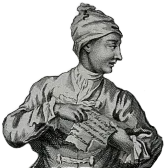There have been many partnerships that have shaped the way dance is viewed: Oliver Messel and Marius Petipa, Diaghilev and Nijinsky, Ashton and Fonteyn. But few have affected dance in recent years as much as the undancing figures of Claudia Winkleman and Tess Daly, who announced their retirement from Strictly Come Dancing on Wednesday.
The Saturday night entertainment show – a celebrity-laden reworking of the popular BBC ballroom dancing programme Come Dancing that was at its peak in the late 1960s and early ’70s – has been on air for 21 years. For 11 of them, it has been fronted by this startlingly undynamic but utterly beguiling duo. Daly, of course, started on the show with Bruce Forsyth, a hangover from music-hall variety who somehow made it on to millennial prime-time TV. His was an aesthetic that was not unrelated to professional ballroom that readers might best know from Baz Luhrmann’s 1992 film Strictly Ballroom (which also happily lent a word to the revamped programme’s title).
Following his retirement, Brucie’s place on the dancefloor was taken by the terminally wooden Daly. Yet what she lacked in musicality she made up for in striking outfits. The current season is the first to openly acknowledge her fashion decisions: in one episode, competitor La Voix looked at Daly’s dress and quipped, ‘I love this, I’ve got a bathmat to match.’ Daly has favoured a traditional version of glamour, wearing dresses with capes, peplums and revealing plenty of shoulder while Claudia Winkleman has frequently favoured trousers in her trademark black.
While Daly reinforces the escapism and family fun that is so integral to Strictly, Winkleman has a more ironic relationship with the programme, frequently pointing out the fact that she is reading the autocue out loud, and that she is always spraypainted orange.
The arrival of Daly and Winkleman coincided with a dramatic change in the staging of the dances. Without the choreographic expertise that Brucie embodied, the show could indulge its showier aspects, with more elaborate lighting, visual special effects and a general emphasis on entertainment and spectacle – so unlike the world we live in.
Strictly, of course, was acutely aware of the world we lived in. Even before Daly and Winkleman became the leaders of the Strictly world, political figures such as Ed Balls were dancing to ‘Gangnam Style’ and Ann Widdecombe was being shot out of a cannon. They then had to face up to what they’d just done at the hands of Daly, saying plenty about the state of the nation and the democratic process (never forget that the viewers vote on what they see). Even political commentary was given the Strictly treatment when John Sergeant became one of the show’s most popular participants, backed by Peter Mandelson in the Houses of Parliament, no less. But it was, perhaps, his interview at the hands of Claudia on Strictly spin-off It Takes Two that consolidated his position as a good man for leaving before making a travesty of the show, and reminding viewers of good sportsmanship. Winkleman, hanging on his every word, and offering a wit that coruscated as brightly as the glitter ball, served to show the magic of what took place on the dance floor. Rakewell will sorely miss one of Saturday night’s – and dance’s – greatest partnerships.

